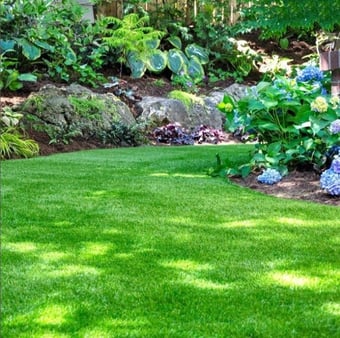
Home / Here on Earth / Healing Gardens in Healthcare
What Influence Can Gardens Have in a Healthcare Facility?
Healing gardens are specifically designed landscapes that aim to impact all aspects of a patient’s recovery experience - physical, mental, and social. They provide close contact with nature that a patient, their caregiver, or staff at a hospital might not get otherwise.
Patient Recovery
Roger Ulrich’s much-cited study, conducted in 1984, compared two sets of patients who had undergone surgery at the same hospital. While one group of patients stayed in hospital rooms whose windows overlooked tree branches, the other set could only see brick walls through their windows. It was found that the patients who could see a natural landscape through their windows had a faster recovery rate and needed fewer pain medications. Also, their medical evaluators reported fewer post-surgery complications compared to the patients who could only see a building through their windows.
Improved Cardiovascular Health
Another study conducted in 2018 by Caoimhe Twohig-Bennett and Andy Jones explains that prolonged exposure to greenspaces lowers heart rate, decreases diastolic blood pressure, and reduces the incidence of coronary heart diseases, among other health benefits. The conclusion of this study found having a green landscape on the grounds of a healthcare facility will allow patients suffering from medical-related issues the opportunity to enjoy a green space and thus contribute to improve their cardiovascular health.
Stress Reduction
A study conducted by Ulrich et al.(1991) compared the stress levels of participants who were exposed to natural landscapes with participants who observed urban landscapes. They found that the people who looked at natural visuals had lower levels of stress compared to the other set of participants. Considering how stressful hospital environments can be, a well-kept landscape on the grounds of the healthcare facility will go a long way in helping both patients and visitors to cope with stress.
Increase in Feelings Of Positivity and Reduction in Anxiety
Stanford University research has found that taking a walk in a natural setting increases positive emotions and encourages feelings of happiness by reducing anxiety. A study of gardens in hospitals by Marcus and Barnes (1995) found that ninety percent of people experienced a positive shift in their mood when they spent time in the gardens. As a patient or a caregiver or even as a staff at a hospital, it is necessary to have an accessible space nearby that they can spend time in without focusing on negative emotions.
Impact on Social Wellbeing
Humans thrive on interaction. Health complications often require being at a hospital for long periods, which can be a lonely experience. A healing garden provides a safe space for patients to interact with other patients if they choose to do so. This social interaction can be an uplifting experience and can provide them with the empathy and support they need. A healing garden also allows families and patients the opportunity to interact socially outside of hospital rooms. Fresh air, sunlight, and green spaces have been proven to be great mood lifters and increase feelings of hopefulness.
How Are These Landscapes Designed?
Healing gardens are designed with the needs of the patients kept firmly in mind. Here are a few essential points:
- These landscapes are designed to closely mimic nature with trees and plants growing in a natural way.
- The walkways are made wide to accommodate wheelchairs. They are made with firm materials that are smooth enough to accommodate passage without much physical strain.
- Water features (like a small fountain) are added as the sound of flowing water has been found to have a calming effect.
- Proper and comfortable seating in shady areas is provided.
- Both private and common areas are available in order to provide individual spaces as well as social spaces.
After reading about how beneficial landscapes can be at a healthcare facility, if you are interested in hiring an experienced landscaping company that values customer satisfaction, please contact Down To Earth!


